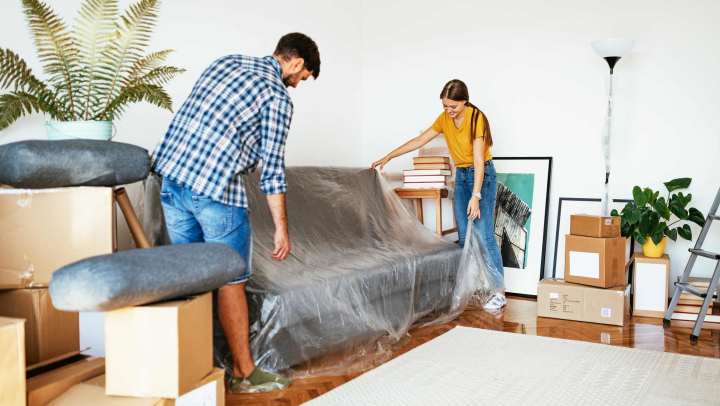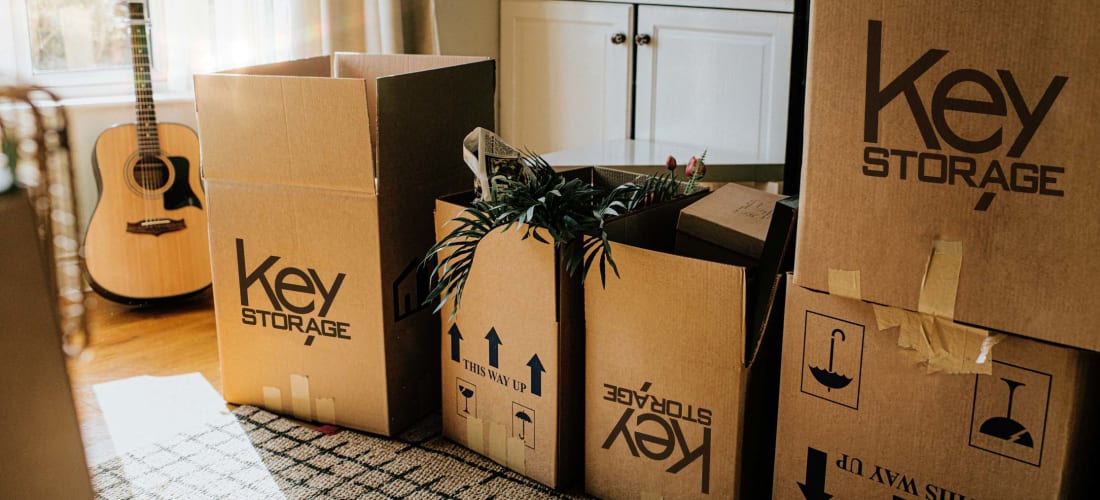How to Wrap and Protect Furniture Going Into Storage
Wrapping furniture before storing it is crucial for preventing discoloration and damage that can ruin upholstery and affect the overall comfort of your sofas and chairs. Additionally, desks, tables, and indoor and outdoor furniture should be wrapped to protect them from dust and scrapes from other stored items. Read our guide below to learn more about how to wrap furniture for storage to keep it in excellent condition.
The Importance of Protecting Furniture
Wrapping your furniture is one of the best tips for packing smarter to help protect your belongings from damage due to humidity, temperature fluctuations, dist, and pests due to regular day-to-day activity and maintenance. You may have had furniture in your home for years or even decades with nothing happening to it, so why should you wrap and protect it for storage? In your home, your furniture isn’t susceptible to wear and tear from insects, humidity, and fluctuations in temperature. All types of furniture, including wooden desks and chairs, suede, and leather couches and chairs, are sensitive to humidity, temperature changes, dirt, and moisture that impact belongings in any storage unit.
The whole reason you’re storing furniture is that you want to use it again. Covering furniture for storage can help protect it for the future, so you can use it in two years or ten, and it will look and feel just as comfortable as it did before going into storage.
Which Items Need to be Wrapped for Storage?
There are several pieces of furniture that should be wrapped for storage to protect them from moisture, dirt, insects, and temperature fluctuations that can cause warping, holes, and other types of damage. The following pieces of furniture should always be wrapped for storage, whether short or long-term:
Wooden furniture
Wooden furniture includes items like tables, chairs, and desks. However, your couch might also be made of wood. These items should be protected to prevent warping, scratches, and dents. Consider all of the items you have in your storage unit that could fall on your furniture and potentially scratch them. Additionally, there are several types of insects that eat wood, like termites and beetles. Wrapping furniture can protect it from damage due to pests or accidents.
Upholstered items
Upholstered items like sofas, mattresses, and living room chairs can attract insects and other pests, not only because they’re comfortable and warm, but because they can eat natural fibers like cotton, wool, fur, linen, and leather. Additionally, they’re susceptible to mold because they can get wet and have difficulty drying in a dark, cool environment like a storage unit. Wrapping furniture like these in plastic can prevent moisture build-up, dirt, and pest damage that makes them unusable in the future.
Glass furniture
Glass furniture like tables, cabinets, and mirrors should be carefully wrapped in bubble wrap or something with padding to protect it from breaking. You may also want to wrap televisions and computers because extreme cold and humidity can cause the metal surrounding these pieces to contract.
Metal furniture
As we’ve mentioned, metal contracts in extreme temperatures. Metal furniture like patio sets, filing cabinets, and metal shelves should be wrapped to prevent the metal from warping. Additionally, humidity can cause the metal to rust, and wrapping them in plastic should prevent the build-up of moisture that can cause oxidation.
How to Protect Furniture in Storage
Even though some of your furniture may seem durable enough to be stored as-is, that’s anything but the truth. Even plush furniture like sofas can get damaged in storage because you haven’t taken the proper precautions. Wrapping your furniture is crucial because it can deter pests while protecting it from moisture. Here are a few tips for how to wrap furniture for storage:
Clean everything thoroughly
Before wrapping your furniture for storage, you should clean it to remove any dust and debris that can cause staining. Dirty furniture can cause odors and contribute to mold growth. Additionally, dirt, dust, and crumbs can attract pests like insects.
You can clean your furniture by vacuuming upholstery and spraying the glass with a cleaning solution to completely remove dust and dirt.
Take everything apart
Taking furniture apart will make it easier to transport and maximize the space in your storage unit. However, it can also prevent damage because it reduces the likelihood of anything breaking while you’re storing it.
Begin wrapping
Knowing how to wrap furniture for storage is crucial because plastic wrap, bubble wrap, blankets, and furniture pads can protect your belongings. To begin wrapping, take your plastic wrap, blanket, or any other materials you’re using, and lie them down flat. Then, you can wrap items as if you were wrapping a present and secure the wrapping with packing tape.
You can take leftover plastic sheeting and use it on the floor in your storage unit to prevent moisture from coming out of the ground and damaging items that aren’t stored on shelves.
Raise furniture off the floor
Keeping your furniture off the floor can protect it while it’s in storage. Water and moisture can seep up from the ground, which is often several degrees cooler than the rest of the unit. Keeping your furniture off the floor by putting it on plastic sheeting or stacking furniture can help protect it from water and pests.
Organize
Always label your furniture and its pieces to ensure you can find them later. After your furniture is in storage for a while, it can be easy to forget which parts and pieces go together or where you put your furniture in the first place. When organizing your furniture in your storage unit, always stack the larger, heavier items on the bottom to prevent them from falling over.
If your storage unit ends up getting a little messy, it’s crucial to organize and find ways to declutter to protect your furniture from falling over and getting scratched. Need help cleaning? Read our tips for how to organize your storage unit.
How Long Can Items Be in Storage?
You can store your furniture for as long as you need, but you should visit your storage unit regularly to clean it, remove dust, and check for pests. There are several storage options available, including indoor and outdoor units. Climate-controlled units are recommended for long-term storage of furniture to protect it from humidity and moisture to limit the effects of extreme temperature fluctuations.
Wrapping Up: Tips for Covering Furniture for Storage
Covering furniture for storage can ensure your belongings are protected from everything from scratches to pests. In addition, you should always choose a reliable storage facility with convenient locations to ensure your belongings are both safe and easy to access.
Looking for short or long-term storage solutions for your furniture? Key Storage has convenient storage locations across the country and several options available to help you find the right unit for your furniture.


